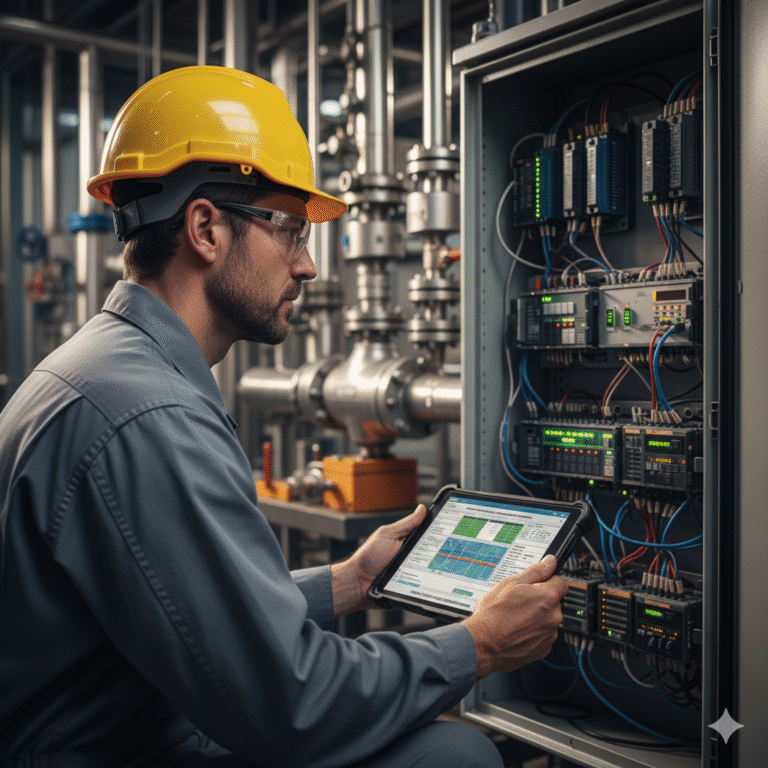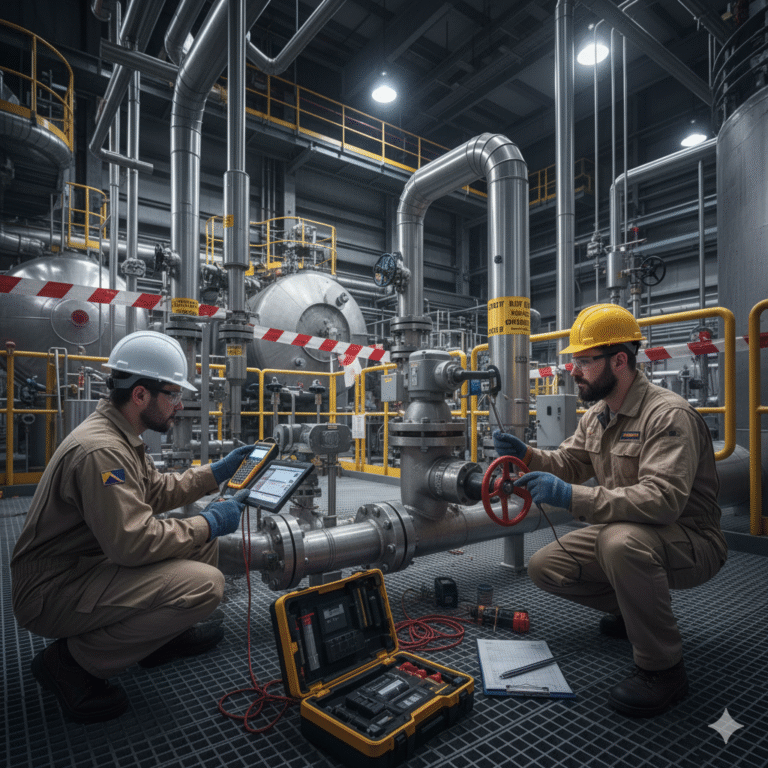Introduction
The Safety Instrumented System (SIS) serves as the last line of defense for process plants. It continuously monitors critical process parameters and takes automatic action to prevent hazardous events. Proper maintenance and inspection of SIS are crucial to ensure its reliability and to maintain the required Safety Integrity Level (SIL).
This article explains the core principles and practical steps of SIS maintenance — including preventive, predictive, and corrective strategies — as well as the key requirements for both online and offline maintenance.
1. Types of SIS Maintenance
1.1 Preventive Maintenance
Preventive maintenance is carried out according to a planned schedule and standard procedures defined by the SIS maintenance program.
Typical tasks include periodic inspection, functional testing, and routine servicing.
It can be further divided into:
Online maintenance: Performed while the equipment remains in operation, without interrupting the process.
Offline maintenance: Conducted when the plant or equipment is shut down, usually during major turnarounds or planned shutdowns.
1.2 Predictive Maintenance
Predictive maintenance is based on real-time monitoring and trend analysis of the SIS components.
It relies on:
Condition-based monitoring data,
Historical failure statistics, or
Manufacturer’s recommendations.
The goal is to identify degradation or early failure signs before they cause a system trip, allowing proactive actions such as part replacement or recalibration. Like preventive maintenance, predictive maintenance is also proactive.
1.3 Corrective (Breakdown) Maintenance
Corrective maintenance is reactive, performed after a fault has occurred.
Its main objective is to locate the root cause of the failure and restore the system to normal operation as soon as possible.
When repairing SIS components, identical replacement must be used to maintain the original safety integrity level.

2. How to Perform Online Maintenance
During normal plant operation, SIS maintenance should focus on inspection, monitoring, and preventive actions without interfering with system functionality.
Routine Inspection
Technician duties:
Each shift, the instrument technician should inspect the SIS twice and record findings.
Checks include:Alarm and diagnostic messages
Module status, indicator lights, and temperature of I/O cards
Cabinet ventilation, relays, barriers, and power supply status
Labeling of terminals, switches, and cables
Condition of sensors, valves, junction boxes, and wiring conduits
Moisture, insulation, and temperature of solenoid valves
Any abnormal condition must be reported immediately to the supervisor.
Weekly and Periodic Evaluation
Weekly evaluation: The instrument engineer should assess system performance once a week and log results in the maintenance management system.
Semiannual evaluation: Conduct a comprehensive SIS assessment every six months, verifying alarms, indicators, and logical functions.
Functional testing: Periodically test confirmation buttons, lamps, audible alarms, and interlock programs.
Backup: Regularly back up SOE (Sequence of Events) records and logic solver programs.
Environmental Control
Maintain cabinet temperature at 26–28°C, ensure a clean environment, and prevent small animal intrusion.
Maintenance Safety Rules
No program modification or download should be performed online during normal operation to avoid unintentional trips.
All actions must follow critical operation procedures and be coordinated with other departments.
Fault repairs should be completed within the Mean Time To Repair (MTTR) defined in the SIS design.
Typical field instruments (switches, transmitters, relays): within 8 hours if spares are available.
Logic controller or system cards requiring vendor support: within 72 hours.
Spare Parts and Contingency
Maintain essential spare parts and replacement modules.
If an abnormality cannot be repaired during operation, a risk assessment and contingency plan should be prepared in advance and executed during the next available shutdown opportunity.

3. How to Perform Offline Maintenance
Offline maintenance is performed during plant turnaround or major shutdown, typically once every two years.
All activities must follow the defined proof test interval and result in a functional safety audit report.
Major Tasks During Turnaround
Visual and Mechanical Inspection
Check physical condition, bolts, and covers for looseness or damage.
Inspect insulation, heat tracing, and protective enclosures.
Wiring and Connection Check
Ensure terminal connections are tight, sealed, and compliant with explosion-proof or waterproof requirements.
Sensor and Transmitter Verification
Verify accuracy, range, repeatability, signal type, and output characteristics according to manufacturer procedures.
Confirm correct signal mapping between process values and engineering units.
Input Loop Testing
Perform actual process simulation or use a signal simulator.
Check circuit insulation, loop resistance, voltage drop, and grounding.
Verify alarm setpoints, hysteresis, and response time.
Safety Function Testing
Simulate failures to verify that final elements move to the safe state upon power or air loss.
Confirm capacity of air reservoirs, actuation speed, and fail-safe behavior.
Logic and Interlock Validation
Verify logic sequence, delay times, trip conditions, and “2 out of 3” voting reliability.
Check switch functions, operator buttons, event storage, and printout capability.
Final Element Coordination
For non-instrument devices (valves, dampers, pumps), verify that interlock signals correctly actuate the final elements.
Relay and Electrical Component Testing
Inspect insulation resistance, pick-up voltage, response time, and contact wear. Replace components beyond their service life.
All maintenance results must be documented and archived for future reference and continuous improvement.

4. Continuous Improvement and Record Management
Accurate maintenance records form the foundation of SIL verification and future maintenance planning.
Historical data from proof tests and repairs should be analyzed to:
Identify recurring failure patterns
Adjust maintenance intervals
Update safety lifecycle documentation

Conclusion
Maintaining a Safety Instrumented System is not a one-time task—it is a continuous engineering process.
Through rigorous preventive and predictive maintenance, strict documentation, and disciplined execution, a plant can ensure that its SIS will respond reliably in critical moments, safeguarding both personnel and production assets.
